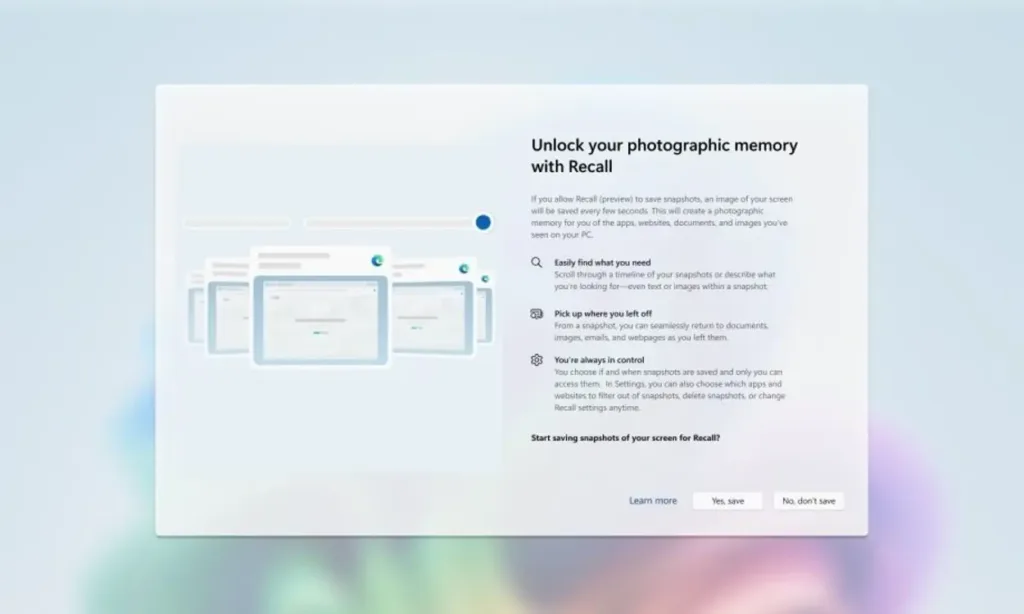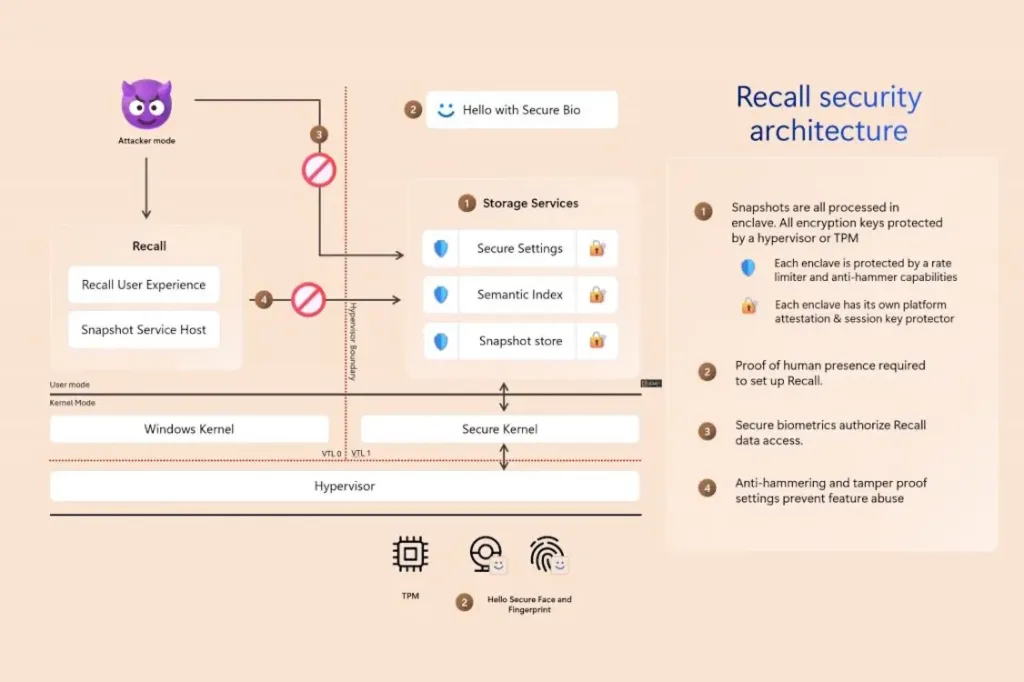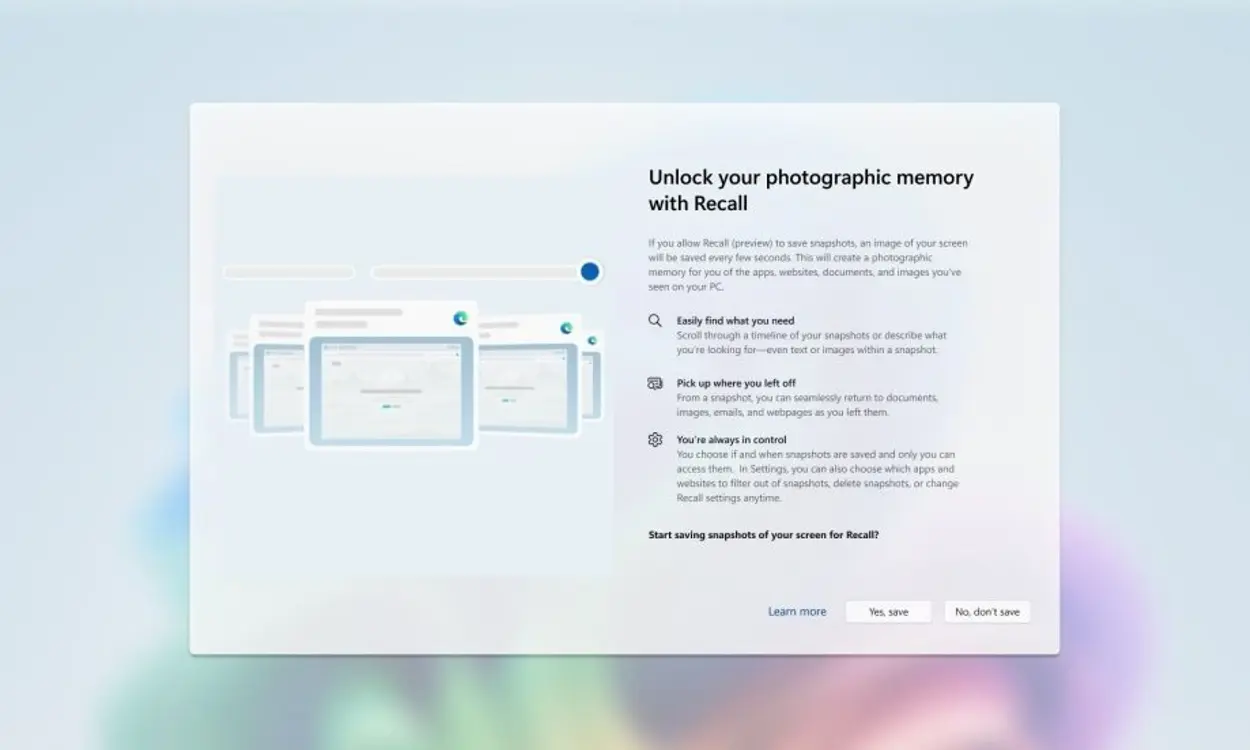
Microsoft has faced significant backlash since announcing the highly anticipated yet controversial Windows Recall AI feature in May. Security researchers quickly raised concerns, labeling Windows Recall as a privacy risk due to its unencrypted data storage in the AppData folder. The criticisms sparked widespread alarm, prompting users to question the feature’s safety. In response, Microsoft addressed these concerns in June, promising major security updates ahead of a broader release to ease public fears.
By September, rumors surfaced suggesting that users might be able to uninstall the feature in the Windows 11 24H2 build. However, Microsoft quickly dashed these hopes by calling the option to uninstall a bug, fueling further disappointment. But now, the tech giant has officially announced that users will be able to completely uninstall Windows Recall if they choose, and the feature will be turned off by default in future updates, marking a significant shift in Microsoft’s approach.
This official confirmation from Microsoft marks a turning point in the Windows Recall controversy.
Recall is an opt-in experience. During the set-up experience for Copilot+ PCs, users are given a clear option whether to opt-in to saving snapshots using Recall. If a user doesn’t proactively choose to turn it on, it will be off, and snapshots will not be taken or saved. Users can also remove Recall entirely by using the optional features settings in Windows.
The company has also outlined several privacy and security enhancements aimed at addressing users’ concerns. David Weston, Microsoft’s VP of enterprise and OS security, spoke with The Verge, emphasizing that these updates are designed to mitigate the potential risks associated with the feature and improve user confidence in Recall.
I’m actually really excited about how nerdy we got on the security architecture. I’m excited because I think the security community is going to get how much we’ve pushed [into Recall].
In a move to boost security, Microsoft has integrated the Trusted Platform Module (TPM) chip with Windows Recall. TPM is a security chip responsible for creating, storing, and validating cryptographic keys. This chip is already used by other security services like Windows Hello and BitLocker, making it a familiar and trusted security measure. Integrating TPM ensures that Windows Recall will operate within a more secure framework.

Furthermore, Microsoft has introduced an additional authentication step. To access Windows Recall, users must sign in using Windows Hello, which provides biometric or PIN-based security. Only after passing this authentication can the tool be used, significantly reducing unauthorized access compared to the original model, which did not require any user authentication before allowing access to the Recall timeline.
One of the most critical security enhancements is that Windows Recall will now function within a Virtualization-Based Security (VBS) Enclave. This secure environment processes all related data and operations, ensuring that sensitive information remains protected. Microsoft describes VBS as a highly isolated area that protects against vulnerabilities, adding a new layer of security to Windows Recall.
When a user interacts with Windows Recall, data is temporarily accessed and processed within the VBS Enclave. Once the user exits the tool, all processed data is wiped from the system, leaving no trace behind. As Microsoft explains, “The only information that leaves the VBS Enclave is what is requested by the user when actively using Recall,” ensuring that data privacy remains intact throughout the process.
Microsoft has also implemented anti-hammering protocols to further protect Windows Recall from malware attacks. These protocols ensure that malicious attempts to exploit the tool are blocked before they can cause harm. Importantly, the company has clarified that Recall will only be available on Copilot+ PCs, meaning earlier rumors about sideloading Recall on other systems are no longer valid.
For those wondering when they’ll get their hands on this updated feature, Microsoft has stated that the first Windows 11 Preview builds with Recall will be rolling out to Insiders in October. Regular users can expect a gradual release following the Insider testing period, allowing for real-world testing before a wider rollout.
While I’m personally relieved that Windows Recall can now be uninstalled, it’s surprising that Microsoft took so long to implement these essential privacy and security measures. In an era where data privacy is paramount, allowing a feature with potential security risks to exist without strong safeguards was a questionable decision. Nonetheless, it’s good to see Microsoft finally taking these steps.
What do you think of Microsoft’s updates to Windows Recall? Are the new security measures enough to address your concerns? Let us know your thoughts in the comments below!




